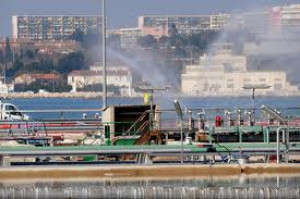Connecting an oil terminal to a chemical plant 1.5 km away, a heat-insulated pipeline pressurised at 300 mm was perforated following a period of intense cold weather; 4 m³ of benzene had solidified upon shrinking below 5°C. By 2:50 pm, the benzene had spread over a 500-m² area. A 250-mm collector on this same pipeline started leaking 4 hours later. The terminal’s emergency plan was activated. The pipeline was isolated and foam spread prior to pumping the layer into a retention basin placed underneath the leak. A water curtain was installed around the pipeline, road traffic was interrupted and terminal personnel confined indoors. With flammability measurements indicating no anomaly, the emergency plan was lifted at 6:40 pm. Fourteen explosive atmosphere detection beacons were deployed throughout the terminal and monitoring rounds were carried out by the operator and fire-fighters.
The next day, the beacons detected 2 leaks between 4 and 10 am (with peaks at 148 ppm benzene) on the pipeline that still contained 50 m³ of product. The emergency plan was re-activated and the leaks were stopped with rings. Pipeline drainage by hydraulic thrust was complicated by the presence of solid benzene “plugs”, then a new leak was detected at 2:30 that afternoon near the first one; the plan was placed back into effect and boat crews on the wharf remained in their craft. A ring was able to clog this leak by 2:45. The day after, the first leak reappeared and the plan remained in effect from 10:30 to 1 pm. A foam-covered concrete casing was ultimately placed around the cracked pipe segment in 3 spots. The terminal resumed activities during the afternoon and the operator published a press release. The incident was attributed to benzene solidification in zones where tracing had not been installed (e.g. nozzle crossings beneath roads). These “plugs” were created in pipe segments isolated from pressure relief valves, where pressure rose due to a combination of two phenomena: increased benzene volume upon melting, and the thermal expansion of liquid benzene.
The weather returned to more clement temperatures, and the pipeline was drained 7 days after the accident.
Download the detailed report in .pdf format (200 Kb)





